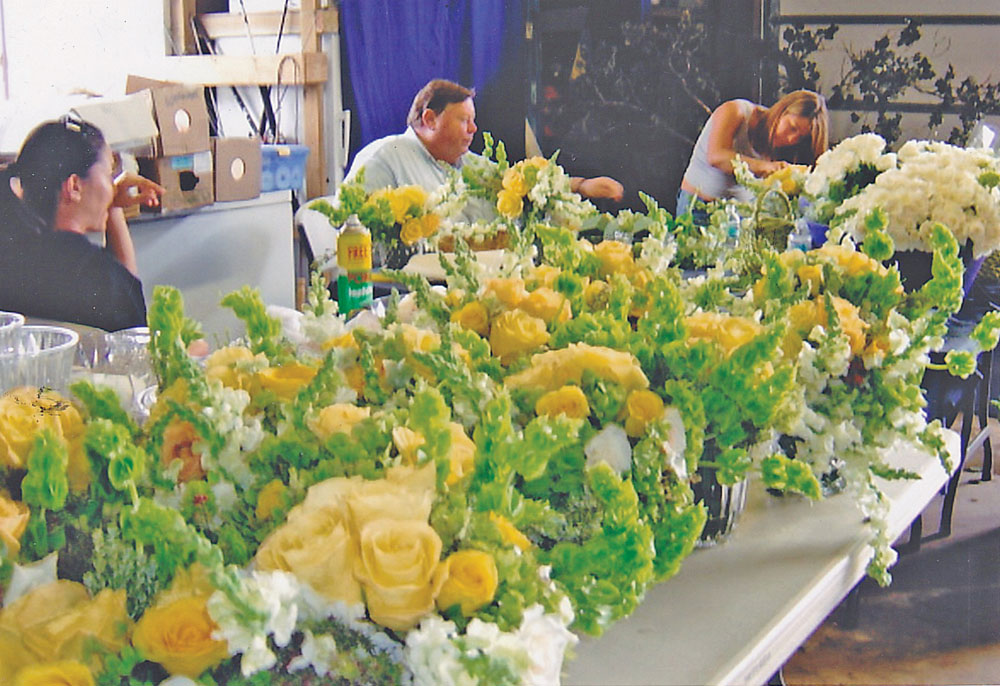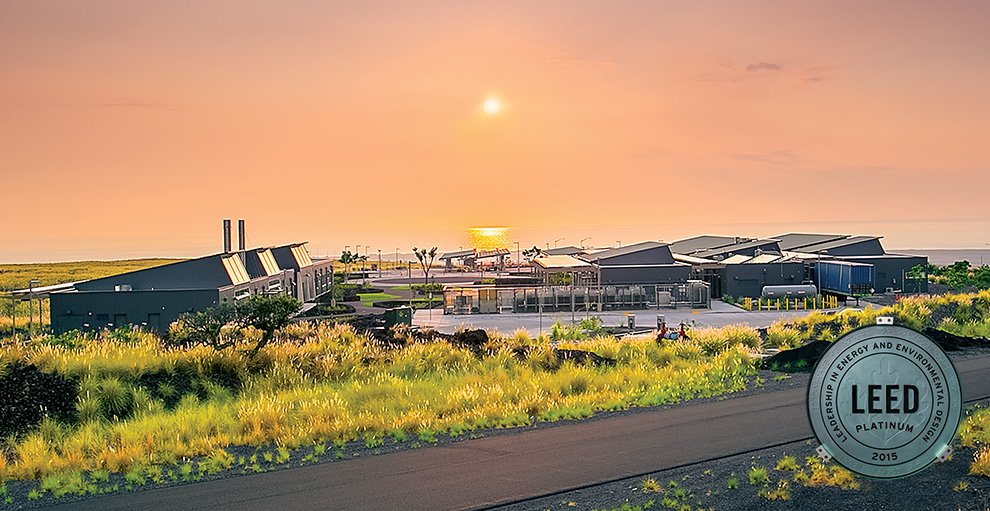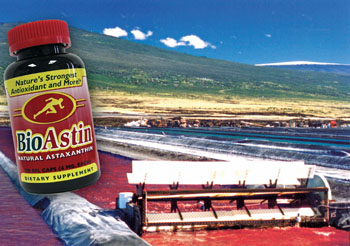
Superfoods! Made Here on Hawai‘i Island
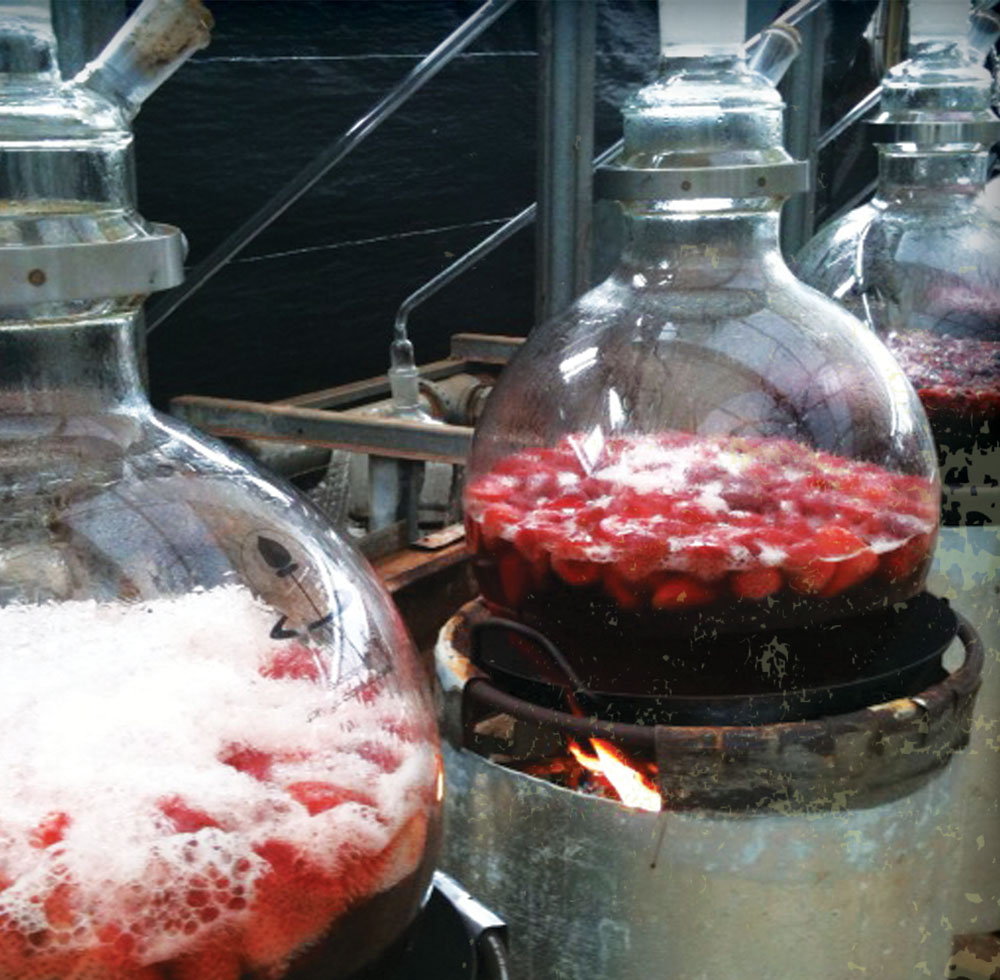
By Fern Gavelek
In the search for healthier eating, many people boost their diets with supplements. Hawai‘i Island is not only a cornucopia of locally grown foods, but it’s also home to some highly regarded supplements. These locally made products that tout improved health utilize our natural resources in their manufacture while employing local residents and boosting our economy. In fact, at least one Big Island company is turning what used to be agricultural waste into a superfood!
Using Coffee Cherries
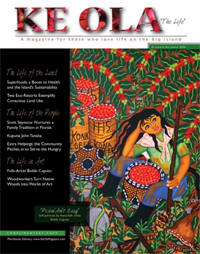
The new buzz in the Kona coffee industry is that those pulpy coffee “cherries, which used to be discarded for waste, are the source of a line of antioxidant-rich products called KonaRed Coffee Fruit. Sandwich Isles Trading Company of Hawai‘i uses coffee cherry exclusively from Kona farmers to produce an extract that goes into a new KonaRed Antioxidant Wellness Beverage.
Recognized by chemists as a superfood for its antioxidant and antiviral properties, coffee fruit has a high level of polyphenols, molecules thought to prevent disease and delay aging.
In Oxygen Radical Absorbance Capacity (ORAC) testing, KonaRed Coffee Fruit was found to be “significantly higher than any known plant product,” including blueberries. The ORAC method, which was developed by the USDA Human Nutrition Research Center on Aging, measures how a food “mops up” destructive free radicals that are generated during everyday activities.
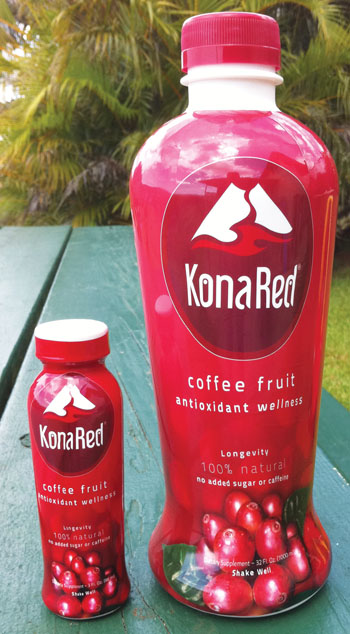
According to CEO Shaun Roberts, coffee cherry processing and extracting is done in Kona when the fruit is red-ripe. Then the extract is shipped to Maui for bottling or made into two types of powders and a liquid extract for commercial ingredient use. “KonaRed is a value-added product for the Kona coffee industry,” says Roberts. “What used to be waste is now a sought-after superfood.” KonaRed is GMP certified, meaning it is produced and handled in a consistent manner to meet high quality standards known as Good Manufacturing Practices set by the Natural Products Association.
Just launched in October, the ready-to-drink KonaRed Antioxidant Wellness Beverage has a berry-like flavor and a negligible amount of caffeine. It’s available in three-ounce and 32-ounce bottles. The smaller bottle offers 7,909 ORAC units of antioxidants. “Scientists who developed the ORAC tests suggest people consume 3-5,000 antioxidants per day,” says Shaun.
KonaRed’s new wellness beverage is available at major retailers islandwide.
The Sandwich Isles firm also sells its raw coffee fruit extract and powders to other companies, which use it in cosmetics, soda drinks, vitamins and coffee. Waialua Soda Works on O‘ahu has added a new KonaRed “flavor” to its existing line of sodas, which include lilikoi and mango. It’s sold at Foodland stores statewide.
KonaRed also appears in Lion Coffee’s line of five, anti-oxidant blends and Lion claims it offers more than double the daily recommended dose of antioxidants.
Malie Organics uses KonaRed for its anti-aging collection that includes a cream and body polish. For a list of local Malie retailers, visit www.malie.com/company_retailers_hawaii.php. For info on KonaRed, visit, www.konared.com.
Cultivating Microalgae
Cyanotech, which began operations at the Natural Energy Laboratory of Hawai‘i Authority (NELHA) in Keahole-Kona over 25 years ago, uses the sun and nutrient-rich, deep seawater to grow microalgae for two very different products.
One is Hawaiian Spirulina Pacifica, a unique strain of the blue-green microalgae, which has been used as a food for centuries. The other is BioAstin, which is extracted from Haematococcus microalgae grown at Cyanotech. Both Nutrex Hawai‘i supplements are GMP-certified.
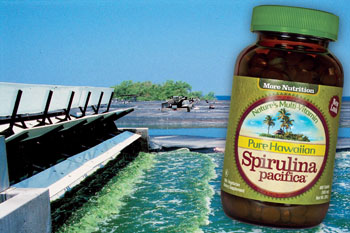
In the wild, spirulina is naturally found in a few high-alkaline lakes in Africa and Central America. A complete vegetable protein, it has high levels of omega 6 fatty acids, B vitamins, minerals and phytochemicals. It has 300 percent more calcium than whole milk, 2,300 percent more iron than spinach, 3,900 percent more beta carotene than carrots and 375 percent more protein than tofu!
Results from independent lab tests show Hawaiian Spirulina Pacifica delivers more key nutrients than any other spirulina.
“One serving of Hawaiian Spirulina Pacifica has the same level of antioxidants, enzymes, vitamins and minerals as five servings of fruit and veggies,” says Bob Capelli, vice president of sales and marketing at Nutrex Hawai‘i. “It has more nutrition than any other single whole food.”
Hawaiian Spirulina Pacifica is cultivated free of pesticides, herbicides and industrial pollutants in NELHA ponds, which are refreshed with deep ocean water and potable drinking water from local aquifers. Nutrex Hawai‘i uses a patented Ocean Chill Drying system to ensure the product maintains its high nutritional content.
BioAstin is a natural astaxanthin—a strong antioxidant and natural anti-inflammatory that works through multiple pathways in the body to combat inflammation. Astaxanthin is found in the highest concentration in the animal world in the muscles of salmon; which are known for strength and endurance when swimming upstream to spawn.
Haematococcus microalgae at Cyanotech accumulates astaxanthin when stressed, turning the green algae to a deep red color. The astaxanthin shields the algae and enables it to live for decades in the sun without any food or water. A patented process extracts the astaxanthin from the algae for BioAstin.

According to Capelli, BioAstin has proven beneficial in several double-blind, placebo-controlled human clinical trails. They involved people with rheumatoid arthritis, carpal tunnel syndrome, exercise-induced joint and muscles soreness, and ultraviolet sun exposure. Capelli, who has 20 years experience in the vitamin industry in New York and Hawai‘i, says both BioAstin and Spirulina Pacificia are worth their weight in gold.
“I used to get a cold every year and the flu every few years before taking them,” the 50-year-old recalls. “I came here in 2002 and have been taking them ever since, and have not had one cold or the flu in nine years!”
What Capelli finds more amazing is that when he plays his twice-weekly basketball game, he’s not sore the next day. “I’ve been playing b-ball for 23 years and before taking these products, I was always stiff and sore–and I was 10 years younger. Now I wake up the next day without any stiffness.”
Both Hawaiian Spirulina Pacifica and BioAstin are sold at numerous retailers. For info, visit www.nutrex-hawaii.com/index.html.
Water Turns to Salt
Salt gets a bad rap as doctors say too much sodium increases the risk of high blood pressure and heart disease. Refined table salt, which is essentially sodium chloride, is high in sodium. Salt, however, is needed in small quantities for our bodies to function. Mera Pharmaceuticals, Inc. uses 100 percent deep seawater to produce lower-sodium Kona Sea Salt. Water is pumped up from 2,200 feet and naturally evaporated in the sun at Keahole’s NELHA.
“We use deep sea water that’s allowed to evaporate via two different, enclosed processes,” says says Mary Huey Leleiwi, Mera’s administrative assistant. Once nature does its part, “Our salt is entirely made by hand,” she says.
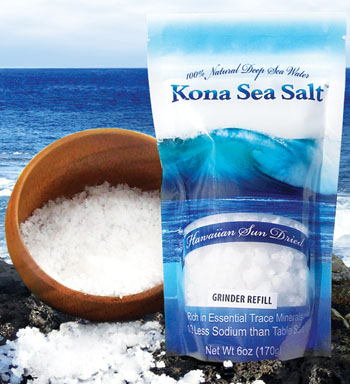
Mary explains the flake salt is slowly evaporated for six weeks in shallow ponds within large tents. “Temperatures reach above 140 degrees in the tents,” she adds. After the flake crystals are formed, the salt is harvested by hand and put in a large funnel-shaped hopper to drain any remaining liquid. “Next, we examine and clean the salt, removing any foreign particles by forceps. Then we weigh, pack and ship the salt.”
Mera’s grinder salt is evaporated inside a closed series of tunnels and tubes, and is harvested and cleaned like the flake salt. According to Leleiwi, the type of evaporative process used yields a different chemical composition for the salts. Flake salt has 33 percent less sodium than ordinary table salt and about 30 percent more of other minerals. Grinder salt has 48 percent less and about 20 percent more other minerals. She adds that both salts are as unique as the deep, nutrient-rich water from which they are sourced. “Compared to other sea salt, Kona Sea Salt contains the highest total concentration of nutrient minerals: magnesium, potassium, manganese, iron, copper, zinc, etc.,” she notes.
A byproduct of the two processes is the bitter liquid–primarily magnesium chloride—collected under the hoppers. Called nigari, it is a coagulant used in the manufacture of tofu from soymilk. Kona Sea Salt boasts the only nigari in the world derived from evaporated deep seawater.
Kona Sea Salt is sold in refillable grinders and pouches. Mary says the flake salt dissolves more quickly in cooking and is preferred by 30-some local chefs. Find it locally at health food stores and other retailers. For info, visit www.konaseasalt.com. ❖
Contact Fern Gavelek at ferng@hawaii.rr.com.
[Note: Any health claims made in this article are the sole responsibility of the individuals quoted and the companies profiled. Ke Ola magazine offers this article to its readers for information only, and suggests that each individual make his or her own choices.]
